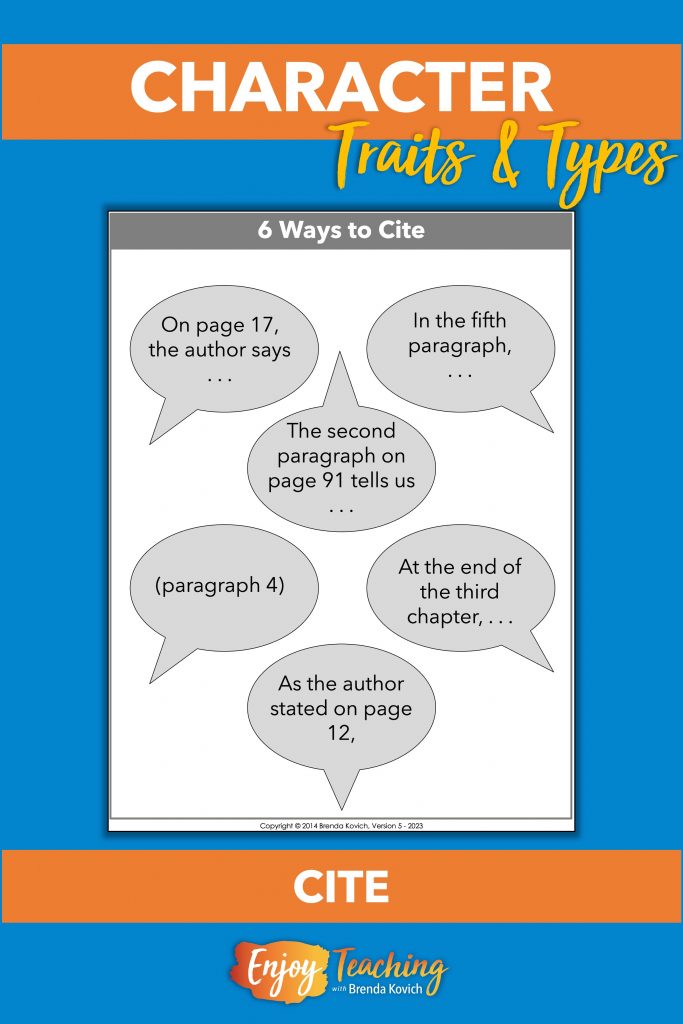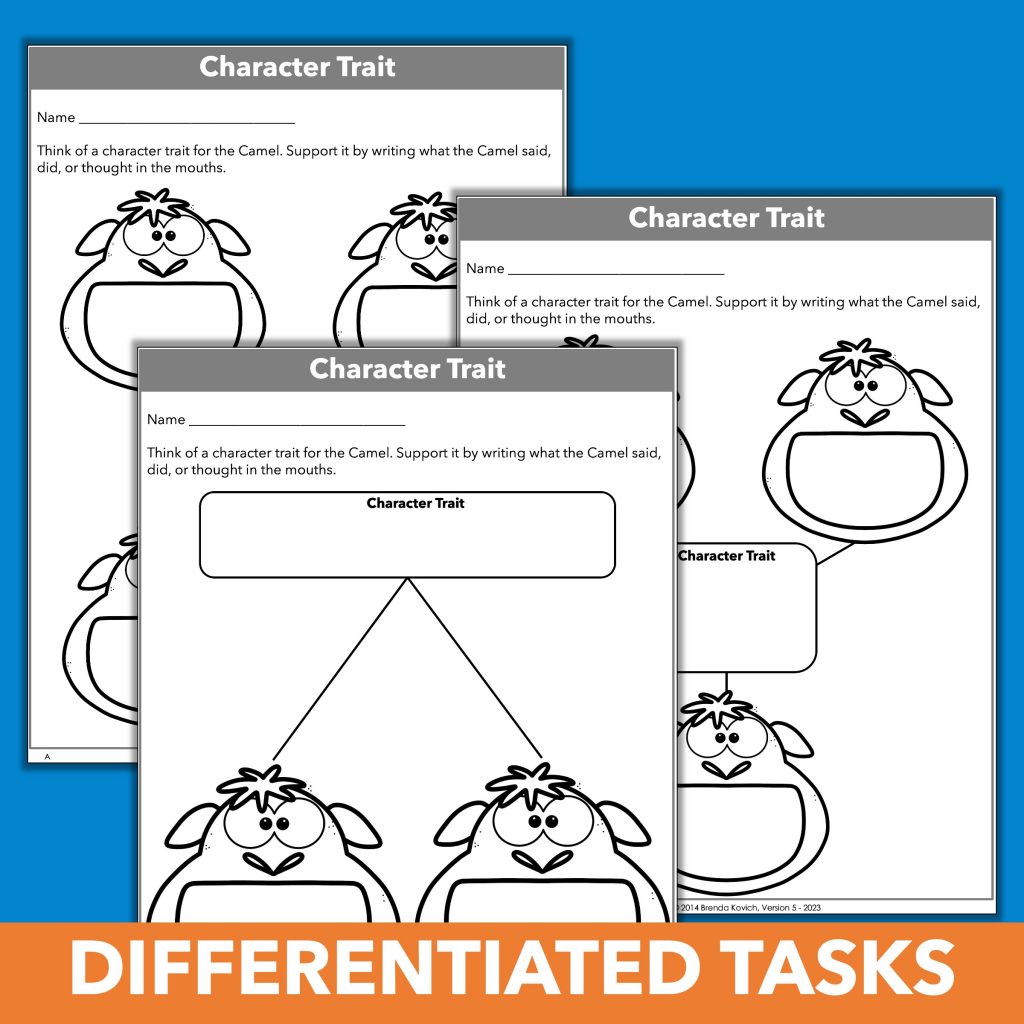Teaching character traits and types? Make it fun with classic literature and engaging graphic organizers. Then your students will love discussing the good, the bad, and the ugly about each figure in a story!

Ms. Sneed Prepares for Teaching Character Traits
Our favorite fourth grade teacher sat at the side table with her teaching partner. “Time to plan more literature activities,” she said.
On cue, Mr. Frank opened his laptop and began to search. “Our next standard asks kids to “describe a character, setting, or event in a story or drama, drawing on specific details in the text (e.g., a character’s thoughts, words, or actions).”
“Let’s start by teaching character traits,” Ms. Sneed said.
“Sounds good. Unfortunately, though, it also sounds like the kids will construct more responses,” A deep frown wrinkled Mr. Frank’s brow.
“Yeah, this skill has become really boring for them. Maybe we can find something fun on the Internet.”
Again, Mr. Frank clicked around. “Here we go! This describing characters resource features classic literature from Rudyard Kipling. The organizers use cute pictures. Not only that, it’s also differentiated for three levels of readers.”
He turned his laptop so Ms. Sneed could look on.
“Hey,” she said, “I like this!”
Reading Classic Literature
Mr. Frank scrolled through the resources and summarized them. “First,” he said, “kids read adaptations of ‘How the Camel Got His Hump.’ They’re differentiated for three reading levels, so we’ll reach each we teach.”
“I like the idea of teaching character traits with this story,” said Ms. Sneed. “Not only will kids get exposure to classic literature, but they’ll also read something with clear archetypes.”

Finding Details from the Text
“Second,” Mr. Frank continued, “they analyze the Camel. Looking back at the text for evidence, they list what he did, said, and thought. As you can see, these pages are also differentiated. We can decide whether kids should find two, three, or four pieces of evidence.”
“Wow, these flexible options will make teaching character traits so much easier. I’d like my high readers to find four details. Most students, however, can locate three. But the kids who really struggle can list only two.”

Identifying a Character Trait
“Third, students select an adjective to label the character’s trait, or type. This list of 180 possible terms will help.”

Organizing the Response
“After teaching kids to determine character traits,” Ms. Sneed says, “it looks like they’ll continue with a description.”
“Right. Students organize their paragraphs with templates that match their organizers. The topic sentence presents the adjective. After that, kids explain the evidence. Finally, they wrap up their responses with a summary or insight.”
“That matches the way we teach informative writing. They’ll take to this with no problem.”

Adding Transitions
“Look at this!” said Mr. Frank. “As they construct responses, kids use transition terms to link ideas. This list will help them find words that work well with their ideas.”

Citing
“And,” Ms. Sneed added, “the anchor chart on the next page supports citation. With these examples, they will all succeed.”

Constructing a Response
“Finally,” said Mr. Frank, “kids construct responses. Instead of describing a character on a random piece of paper and turning it in for a grade, they use a themed template.”
“Aha! Then we can display their work. I definitely think this will add some excitement to the project.”

Enjoy Teaching Character Traits
Ms. Sneed sat back in her chair with a satisfied sigh. “Okay, I admit it. Teaching character traits will be a fun addition to our ELA block.”




